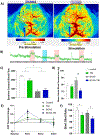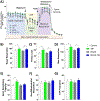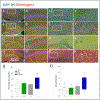Cerebral hypoperfusion exacerbates vascular dysfunction after traumatic brain injury
- PMID: 39103029
- PMCID: PMC11361331
- DOI: 10.1016/j.expneurol.2024.114907
Cerebral hypoperfusion exacerbates vascular dysfunction after traumatic brain injury
Abstract
Traumatic brain injuries are extremely common, and although most patients recover from their injuries many TBI patients suffer prolonged symptoms and remain at a higher risk for developing cardiovascular disease and neurodegeneration. Moreover, it remains challenging to identify predictors of poor long-term outcomes. Here, we tested the hypothesis that preexisting cerebrovascular impairment exacerbates metabolic and vascular dysfunction and leads to worse outcomes after TBI. Male mice underwent a mild surgical reduction in cerebral blood flow using a model of bilateral carotid artery stenosis (BCAS) wherein steel microcoils were implanted around the carotid arteries. Then, 30 days post coil implantation, mice underwent TBI or sham surgery. Gene expression profiles, cerebral blood flow, metabolic function, oxidative damage, vascular health and angiogenesis were assessed. Single nuclei RNA sequencing of endothelial cells isolated from mice after TBI showed differential gene expression profiles after TBI and BCAS, that were further altered when mice underwent both challenges. TBI but not BCAS increased mitochondrial oxidative metabolism. Both BCAS and TBI decreased cerebrovascular responses to repeated whisker stimulation. BCAS induced oxidative damage and inflammation in the vasculature as well as loss of vascular density, and reduced the numbers of angiogenic tip cells. Finally, intravascular protein accumulation was increased among mice that experienced both BCAS and TBI. Overall, our findings reveal that a prior vascular impairment significantly alters the profile of vascular health and function of the cerebrovasculature, and when combined with TBI may result in worsened outcomes.
Keywords: Cerebrovasculature; Metabolism; Mice; TBI; Vascular health.
Copyright © 2024. Published by Elsevier Inc.
Conflict of interest statement
Declaration of competing interest None.
Figures










References
MeSH terms
Grants and funding
LinkOut - more resources
Full Text Sources
Medical

